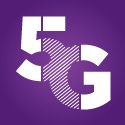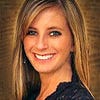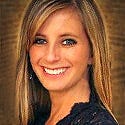
CHICAGO -- ATIS 5G Symposium at the Big Telecom Event -- US Cellular CTO Michael Irizarry has doubts around how fast 5G will develop, but he is fairly certain of the fact that it will require a new waveform, albeit one that is based on OFDM (orthogonal frequency-division multiplexing).
Speaking at the Alliance for Telecommunications Industry Solutions (ATIS) 5G Symposium ahead of BTE here, Irizarry, EVP and CTO, Engineering and Information Services, of Chicago-based operator U.S. Cellular Corp. (NYSE: USM), said that he thought Universal Filtered OFDM (UF-OFDM) would emerge as the waveform for 5G.
UF-OFDM is a new radio access technology (RAT) championed by Alcatel-Lucent (NYSE: ALU). It's a radio access technology (RAT) that can support everything from low-bandwidth, low-powered Internet of Things devices to high-bandwidth video. (See 5G: Generation Gap.)
Other potential RATs proposed for 5G include Huawei Technologies Co. Ltd. 's OF-OFDM and SCDMA, NTT DoCoMo Inc. (NYSE: DCM)'s non-orthogonal multiple access (NOMA), Filter Bank Multicarrier (FBMC) or Universal Filtered Multicarrier (UFMC). (See Alcatel-Lucent, Huawei Pitch 5G Radio Technologies and Getting Massive at DoCoMo's 5G Lab.)
Irizarry didn't make a hard plug for UF-OFDM, but rather stressed the importance that the 5G waveform is some type of OFDM. "The distinction between these waveforms considered for 5G and OFDM we use today is the new type of OFDM allows filtering down to the sub-carrier level, down to the resource block level, which allows for greater flexibility and coexistence with today's technologies," Irizarry said.
"I believe there will be a new waveform, and the new waveform will be required to support the extreme throughput demands of some of the use cases and the very low latency other use cases will require," the CTO added. "The key question around the new waveform is whether or not it will work its way down to low-band spectrum."
Find all the news, views, sites and sounds from the Big Telecom Event on our dedicated show site here on Light Reading.
Speaking later in the day, Manish Jindal, Vice President & CTO, Broadband and Media, Ericsson AB (Nasdaq: ERIC), also added the question of what UF-OFDM would cost. He said it will be about four times as expensive as traditional OFDM, so there is a lot of work going on to keep the costs down. Ericsson isn't taking a hard line in the vendor waveform debate, but wants to play a role in creating industry consensus, he said.
The different waveform standards proposed are not vastly different from one another, according to Heavy Reading Senior Analyst Gabriel Brown, but vendors are duking it out for the bragging rights alone.
"There is quite a bit of debate and a lot of jockeying in positions particularly among the big vendors and once this does hit the standards development next year, we could see a bit of fur starting to fly," Brown said after the presentations.
— Sarah Thomas, 

 , Editorial Operations Director, Light Reading
, Editorial Operations Director, Light Reading
About the Author(s)
You May Also Like




_International_Software_Products.jpeg?width=300&auto=webp&quality=80&disable=upscale)







